Ways to combat diseases and pests of cacti
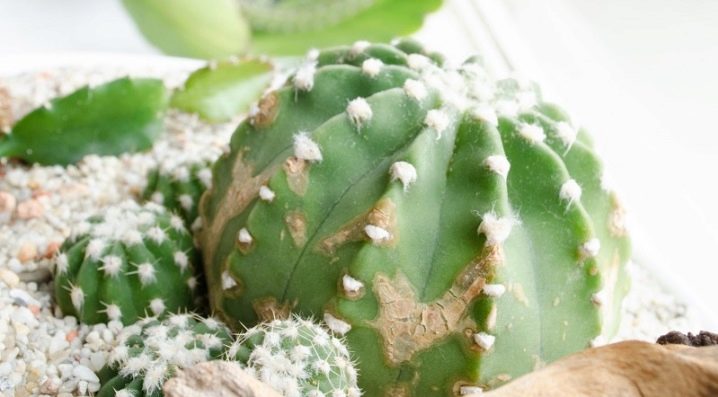
It would seem that the cactus is one of the most unpretentious indoor plants that can easily endure even harsh conditions. However, this picky thorny flower can get sick or be attacked by pests. In order not to start the process of spreading the disease, it is important to diagnose the disease in a timely manner, and also to know in advance what to do to eliminate it.
Symptoms and Causes
If the owner of the cactus does not notice active growth, then this is the first sign that the plant is affected by disease or insects. Also, the reasons could be errors in the content, for example, a cactus may not grow if it is not sufficiently provided with light, improperly transplanted or watered with very cold water.
Another reason for stunted growth can be grafting, after which the cactus experiences stress. If growth has slowed down after flowering, it is possible that the crop was simply depleted during the development of the flowers.
In order for the cactus to grow well, it is important to slightly increase the air humidity during the period of active growth, in spring and summer. This can be achieved with household air humidifiers or simply put a container of water near the pot.
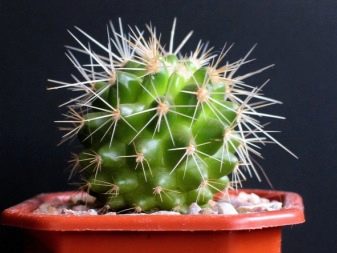

If a dried wrinkled stem is observed, then the grower is recommended to touch it. A dense stiff stem indicates a lack of moisture, and a soft, watery stem indicates an excess of moisture. Only a transplant with the elimination of all rotten roots will help to correct the situation. Sometimes flower growers notice that the color of the stem and leaves of the cactus has changed. Yellowness and brown spots indicate the presence of a disease. Also, this may be due to changes in the light regime, water ingress on the plant, moving to a new place, exposure to direct sunlight.
When shedding of leaves or flowers occurs, it can be assumed that changes in lighting, watering, or temperature are the cause. An untimely transplant or an inferior composition of the soil could also serve as a factor. Insects and diseases are also possible. If the grower noticed that the shoots are drying, then it may be worth raising the temperature of the water when watering, and also excluding the draft. Another reason may be trauma to the root system during transplantation.
Some growers notice that the cactus is bent over. Most likely, the plant is simply reaching for the light source. It is recommended to turn it with the bent side back, but if after 3-4 days the bent flower does not return to its original shape, then, most likely, it has rotted, and then the reasons must be looked deeper. Rusty spots on the stem may indicate too cool indoor air. Yellowing of the soil indicates a deficiency of useful elements in the soil, it is recommended to feed the cactus with mineral mixtures. Wounds and cracks can be caused by mechanical damage. Sometimes the skin cracks if the crop is overfed with organic matter.
When the roots begin to rot, waterlogging of the soil should be excluded. Especially often this process is found with a lack of light and low air temperature. If the appeared wounds or cuts are not disinfected with sulfur, then this can also cause decay or the appearance of mold. Short-term flowering can lead to lack of ultraviolet lighting, lack of wintering, errors in the irrigation procedure, poor-quality soil composition, "moving" to a new place.

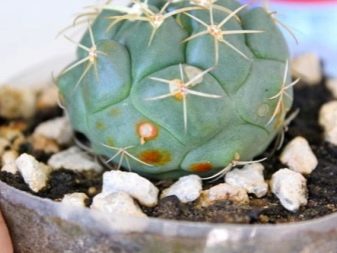
Common diseases
All of the above symptoms can be triggered by diseases. The most common ailments are as follows.
- Rhizoctonia. Fungal disease, which is characterized by a visible putrefactive process that affects the stem from the inside from the base to the top.
- Helminthosporiosis. This fungus usually affects young stems. Under the influence of the disease, the cactus is deformed, mummified, a fleecy green plaque appears. The fungus is already initially introduced with seeds and manifests itself with a combination of low temperature and high air humidity.
- Fusarium. Articulated cacti often become victims of this ailment, sometimes the fungus infects columnar and spherical varieties. The disease destroys the plant slowly starting from the root system, gradually moving upward, after which the culture begins to wilt. You can understand that a cactus has become a victim of fusarium by looking at brown vessels on the cut - the main symptom of the disease. Usually the disease gets through wounds or insect bites.
- Fitium. Under the influence of this ailment, putrefactive processes are observed on the surface of the stem, gradually the tissues soften. The disease mainly affects the root collar. Infected soil can be the cause of the disease.
- Anthracnose. Sometimes this disease is called brown spot. As the name suggests, the fungus is characterized by the formation of brown spots that gradually dry out and become scabby.
- Black spots. They arise in a cool room with high levels of air humidity. One of the most dangerous fungi. Often, under the influence of its negative processes, the plant dies.
- Viruses and mycoplasmas. They can infect cacti through insect bite holes or by contaminating cut areas. Viruses are not cured, since the culture is completely affected by the disease and the elimination of any part will not save the plant. Among the viruses in cacti, the epiphyllum mosaic is most often found. It can be recognized by slightly depressed yellowish lesions that spread over time from the edges to the center. A virus-infected cactus can no longer be revived.
- Suberization. Usually seen in deciduous species and prickly pears. It occurs at high air humidity in combination with a low temperature or when the crop is over-fed with nitrogen.
- Burns. This process is indicated by large light yellowish spots. Burned stems cannot be saved, but the situation can be prevented.
Most often, burns occur in the spring, when, after the winter period, the cactus is under bright sunlight.
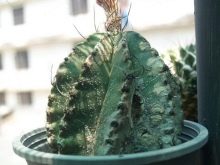
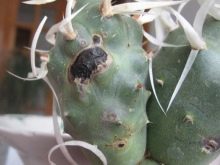

Pests
The following insects like to feast on cacti.
- Mealybug. A small pest covered with a white, flour-like coating. Loves plant sap. After the insect has eaten, secretions remain on the leaves, which can be affected by the sooty fungus. Under the influence of a double enemy, the development of the cactus slows down, it withers, new shoots shrink.
- Spider mite... Usually this insect infects rebuts, echinopsis and other fleshy varieties. Appears in conditions of excessive dry air and high temperatures. The tick feeds on plant sap, the skin damaged by its bites turns yellow, dries up, the affected areas eventually merge into a whole brown spot. The most delicious part for a tick is the top of a cactus.
- Shield. Females actively lay eggs on the plant. The hatched larvae begin to suck the juice out of the cactus. This pest is resistant to many control methods, since it is covered with a shield that protects it from treatments. Seeing red or brown scales on the stem, you need to pick them up with your fingernail. If it turned out to separate the little body, then this is a scabbard. If the stain remains, then this indicates a disease.
- Nematode. This is the name of a scanty worm that settles on the roots of a cactus. It affects the root system so actively that sometimes only elimination of damaged roots and new rooting of the cactus helps to save the culture.


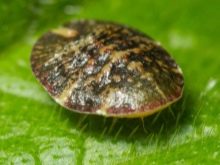
Treatment methods
Having correctly identified the reasons for the deterioration of the condition of the cactus, it is important to eliminate all provoking factors in a timely manner. If the plant begins to wilt due to mistakes in care, accordingly, the conditions of detention should be changed. When diseases or pests are the cause, it is practically impossible to do without special preparations.
If the cactus is infected with rhizoctonia, it is recommended to carefully remove or dissect the not yet infected specimens into a steamed substrate. Steam treatment will sterilize the soil. With helminthosporiosis, all affected parts must be immediately eliminated, and healthy seedlings must be transplanted. To prevent this disease, it is necessary to pickle all the seeds at the planting stage. Vitaros copes well with both fungi.
To prevent fusarium, it is important to use only disinfected soil, remove diseased leaves in time, do not overfeed the plant with nitrogen, and observe moderate temperature and humidity. Fungicides "Vitaros", "Maxim", "Hom" will help to revive the already formed ailment.
If the cactus is affected by phytium or late blight, then again you can resort to the help of the drug "Hom". In case of severe damage, the specimen is destroyed along with the soil and container in which it was grown.
To avoid the formation of this ailment, it is required to limit watering, especially in winter during the rest period.

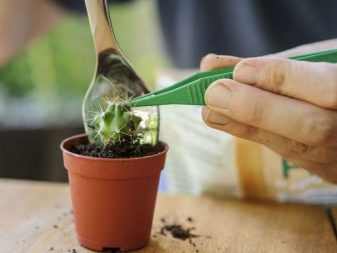
Early brown spotting can be eliminated by cutting out the affected areas. Places of cuts must be treated with activated carbon. To prevent the appearance of black spot, it is important to monitor the temperature and humidity of the air, especially for thermophilic species.
Particular attention should be paid to insect control methods. For example, insecticides practically do not work on spider mites. After itself, this pest leaves a rusty coating that cannot be removed even after the plant is rescued. Acaricides will help to cope with insects. But the problem is that some individuals develop immunity to poisons, and then even these remedies will not help. Insects that have survived one treatment will no longer be afraid of re-spraying. Therefore, it is important to use proven means. The most effective are "Actellic", "Neoron", "Fufanon", "Apollo", "Oberon".
When preparing the product, follow all the steps according to the instructions. With the resulting mixture, process not only the entire stem, but also the soil, pay special attention when spraying to the root area. For the most effective results, use two different products with a break of one week. To prevent the appearance of this pest, wipe the cactus with a brush, impregnated with a solution of acetone and alcohol in proportions 1: 2.
To cope with the mealybug will help drugs "Confidor" and "Aktar". These funds are well absorbed by the roots. When individuals are visually noticeable, you can destroy them with root baths. To do this, place the roots in hot water (+ 50 + 55 degrees) for 15 minutes.
Another way to fight the worm is a five-minute rinsing of the roots in the Actellik solution.
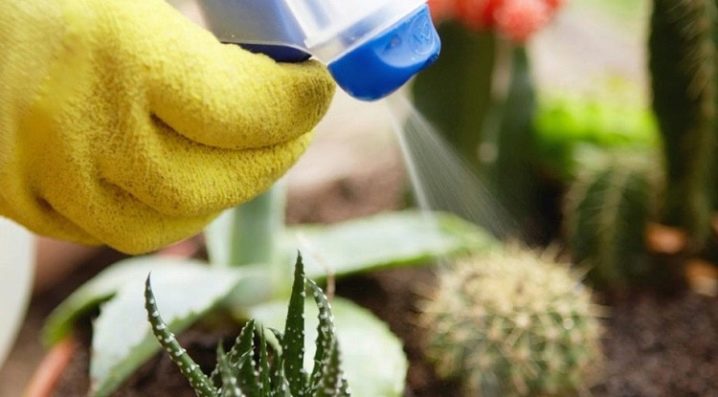
Competent florists advise to do the following when fighting a worm.
- Rinse the roots well from all individuals. First, water the roots with warm running water, gradually increasing its temperature. It is important that all insects are washed away.
- Prepare a soapy solution with your regular detergent. Even the classic "Fairy" will do. You can simply soap the roots with this tool. Leave them under the lather for 10 minutes and rinse well.
- Prepare a highly concentrated Fitoverma solution, place the affected roots there for 15 minutes, then dry the plant thoroughly.
- Rinse and disinfect the container, prepare new soil supplemented with crushed activated carbon, perlite and vermiculite.
- Plant the renewed cactus in a pot after all procedures and drying.
- Treat all neighboring specimens with Fitoverm.
If the plant is overpowered by scale insects, then you can get rid of them mechanically. To do this, soak a cotton swab in alcohol and carefully remove the individuals. If the needles are quite thick and make it impossible to extract insects, then just water the cactus solution of "Confidor" or "Aktara"... The pests that have died from the poison will dry out, after which they can be easily shaken off the plant. After 7 days, the manipulation is recommended to be repeated to consolidate the effect.
To cleanse the plant from the nematode, all parts damaged by it should be eliminated. Then the cactus is treated with alcohol, the roots are cleaned from the soil and immersed in hot water at a temperature of +70 degrees for half a minute. After such a bath procedure, all the roots, especially the cuts, are sprinkled with crushed activated carbon. It is possible to destroy the nematode with the help of chemical action with drugs based on imidacloprid.
Suitable, for example, "Confidor", "Tanrek", "Vermitek". Dip the cactus into the prepared solution for 10 minutes along with the roots and stem.

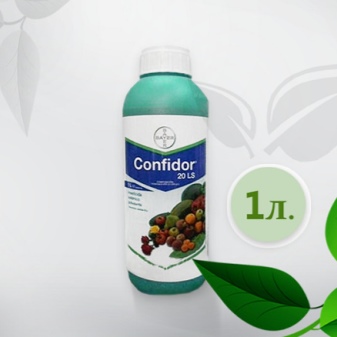
Prophylaxis
To avoid infestation of the plant and to prevent the attack of insects, it is important to water it moderately, in no case flood it, to avoid getting moisture on the stem. Keep the culture in a warm, dry place in the sun.
By planting or replanting a flower, be sure to disinfect the soil. To do this, steam it in boiling water or bake it in the oven for 10-15 minutes at a temperature of 200 degrees. When new plants appear in the house, keep them in quarantine for a while. When sowing seeds, always dress the planting material. Apply fungicide treatments regularly as a preventative measure.
Remember that special drugs can cure a prickly "patient" only at an early stage of the disease, and if the disease is not detected in time, the cactus can die. Therefore, periodically inspect the plant for suspicious spots and monitor its general condition.
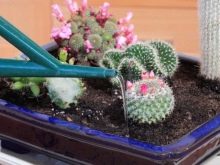

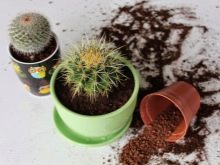
For information on how to save a cactus from dry rot and root it correctly, see the next video.























































The comment was sent successfully.